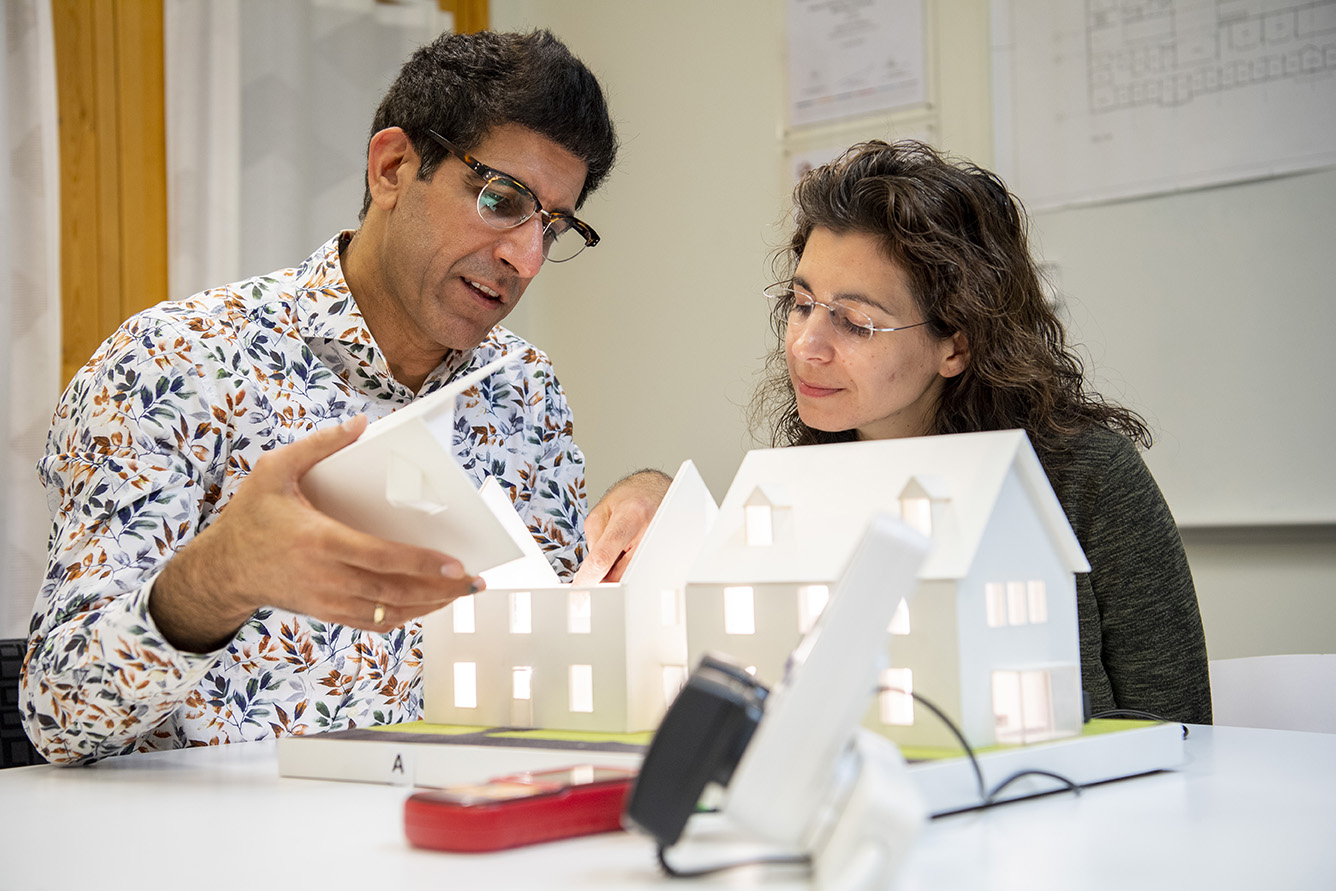Researchers create an innovative model house for teaching in schools

Schools and teachers need access to more innovative tools for teaching to cope better with digitisation and to face the ongoing climate challenges. This is the opinion of our researcher Allan Hawas, who is adamant that the digital development and the sustainability perspective should be reflected in the classroom and in teaching.
Schools and teachers need access to more innovative tools for teaching to cope better with digitisation and to face the ongoing climate challenges. This is the opinion of our researcher Allan Hawas, who is adamant that the digital development and the sustainability perspective should be reflected in the classroom and in teaching. He has therefore, together with his colleague, created a simulation tool in the form of a model house which can be used to investigate thermal performance and energy efficiency in buildings.
A model house that simulates indoor climate and energy consumption
Allan Hawas, Senior Lecturer at Mälardalen University who conducts research in energy efficiency, has together with his colleague Professor Amin Al-Habaibeh from Nottingham Trent University (NTU) created a simulation tool in the form of two model houses that are intended to be used in both teaching and research. The model houses can be used to simulate thermal performance and energy efficiency in buildings, i.e., how the indoor climate works and the efficiency of energy consumption in the building as a whole.
“Teachers need new, innovative tools that can motivate, engage, and challenge the pupils of today to think in a new way in their search for knowledge,” he says.
“Simulation is an excellent tool that supports teaching and research in subjects such as physics and engineering/technology at different levels at school, as the model consists of two identical houses, one of which is well insulated and the other is poorly insulated. Both are equipped with identical sensors and meters to be able to monitor, visualise and control the heating process, indoor temperature, and energy consumption with the help of different digital meters,” says Allan Hawas.
Direct link to the curriculum
This innovative teaching tool has a direct connection to the curriculum for all the stages of primary and lower-secondary school, and it’s easy to use.
“Because the model consists of two identical systems, it’s easy to compare different aspects such as indoor temperature, energy consumption, heating costs, heating behaviour and other parameters in energy efficiency.
Therefore, pupils can easily observe and investigate how the heating system works, how the energy flow can be influenced by insulation, monitor the indoor temperature and measure the energy consumption for insulated and non-insulated houses.”
Easy to use in various areas of teaching
The model is simple to use and there are many different types of teaching areas where it can be applied. Allan Hawas provides a few examples:
- Pupils can perform various systematic surveys to calculate energy consumption, in order to estimate any energy savings because of better insulation.
- Pupils can use various digital measuring instruments such as electricity meters, thermometers, thermal imaging cameras, software, etc.
- Pupils can document the results to evaluate or interpret and analyse the diagrams and other generated data.
- Pupils can use it as an electrical system since it contains electrical circuits, electrical sensors and thermostats.
Hopes the model will be available to schools shortly
When Allan Hawas and his colleague Amin Al-Habaibeh designed the model, they put a little extra thought into it, for it to be a flexible teaching tool where teachers can easily add and integrate additional components such as power banks, other heating sources and solar cells.
“We hope that the tool will be available to schools soon, to support teaching about energy consumption in buildings, the impact of insulation, energy visualisation, sustainability, energy efficiency, integrated electrical systems, sensors and building structure,” concludes Allan Hawas.
Contact Information
